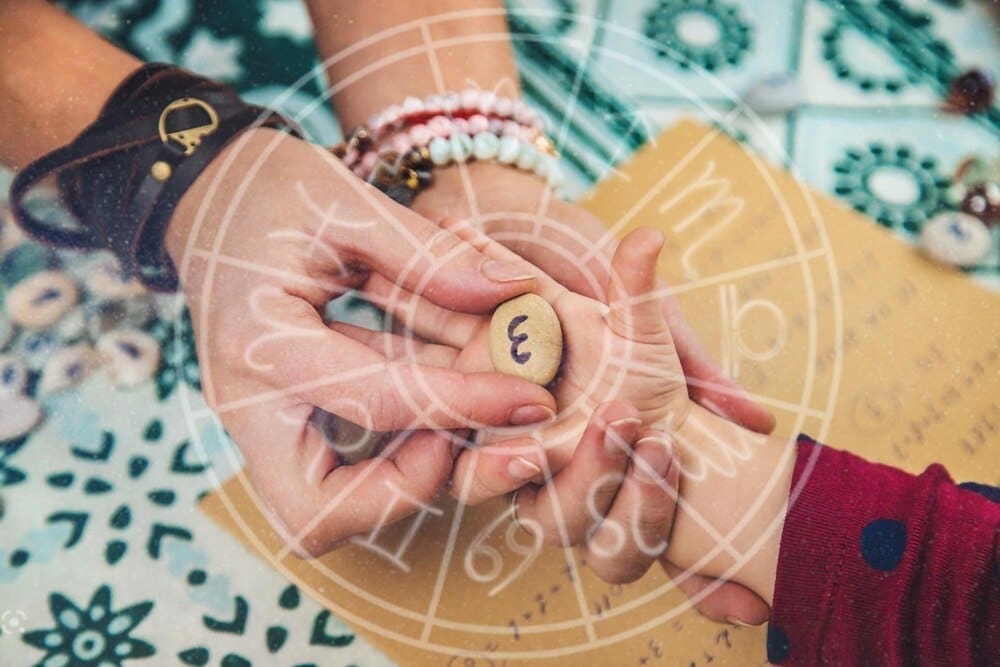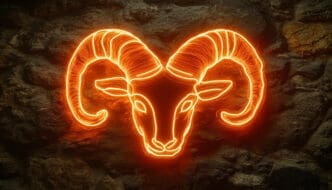The Drekkana, or D3 chart, stands as one of the most vital divisional charts in Vedic Astrology, offering profound and specific insights into an individual’s courage, willpower, determination, and relationships with their siblings. Derived by mathematically dividing each zodiac sign into three equal 10-degree segments, this chart acts as a cosmic microscope, magnifying the themes of the 3rd house of the main birth chart (the Rasi or D1 chart). Astrologers consult the D3 chart to understand the quality of a person’s initiative (parakrama), the nature and fortune of their younger siblings, their creative talents, and their inherent drive to achieve goals through personal effort, revealing a layer of detail that the primary chart alone cannot provide.
What is a Divisional Chart (Varga)?
To grasp the significance of the Drekkana, one must first understand the concept of divisional charts, known as Vargas in Sanskrit. The main birth chart, called the Rasi or D1 chart, provides a broad overview of a person’s life, destiny, and personality based on the planetary positions at the exact time of birth.
However, Vedic seers developed a system to delve deeper into specific areas of life. They created the Vargas by applying mathematical formulas to the planetary longitudes in the D1 chart. Each Varga chart “zooms in” on a particular house’s portfolio, offering a more granular and nuanced understanding of that domain.
For example, the Navamsha (D9) chart reveals the inner self and marital destiny, while the Dasamsha (D10) chart details career and public status. The Drekkana (D3) is the Varga chart specifically linked to the 3rd house, which governs siblings, courage, communication, short journeys, and skills involving the hands.
How the Drekkana is Calculated
The D3 chart is created by dividing each 30-degree zodiac sign into three 10-degree sections called Drekkanas. A planet’s position in the D3 chart is determined by which of these three sections it occupies in the main D1 chart.
There are several methods for assigning these sections to signs, but the most widely used is the Parashara method. In this system:
- A planet in the first 10 degrees (0° to 10°) of a sign remains in that same sign in the D3 chart.
- A planet in the second 10 degrees (10° to 20°) is placed in the 5th sign from the original sign.
- A planet in the third 10 degrees (20° to 30°) is placed in the 9th sign from the original sign.
For instance, if the Sun is at 15 degrees Leo in the D1 chart, it falls into the second Drekkana. The 5th sign from Leo is Sagittarius, so the Sun would be placed in Sagittarius in the D3 chart. This calculation is performed for all planets and the Ascendant to construct the full D3 chart.
The Drekkana and Sibling Relationships
The most famous application of the D3 chart is the analysis of siblings. While the D1 chart’s 3rd house indicates younger siblings and the 11th house indicates elder siblings, the D3 chart provides critical details about the nature of these relationships, the number of siblings, and their general fortune.
The 3rd House and Younger Siblings
The 3rd house of the D3 chart and its lord are paramount for understanding younger siblings. If the 3rd house of the D3 is occupied by benefic planets like Jupiter, Venus, or a well-placed Moon, it suggests harmonious and supportive relationships with younger siblings. They may be a source of happiness and strength for the native.
Conversely, if the 3rd house of the D3 contains malefic planets like Saturn, Mars, Rahu, or Ketu, it can indicate conflict, distance, or challenges related to younger siblings. The specific malefic provides clues: Mars can show arguments, Saturn can indicate coldness or burdens, and Rahu might suggest unusual or deceptive dynamics.
The condition of the 3rd lord of the D3 is equally important. If it is exalted, in its own sign, or well-placed in a Kendra (1st, 4th, 7th, 10th) or Trikona (1st, 5th, 9th) house within the D3, it strengthens the promise of happy sibling bonds, even if the 3rd house itself has afflictions.
The 11th House and Elder Siblings
While the 3rd house is the primary focus, some traditions also look to the 11th house of the D3 chart for specific information regarding elder siblings. The same principles apply: benefic influences on the 11th house and its lord suggest supportive elder siblings, while malefic influences can point to difficulties.
The Role of Mars (Bhratrukaraka)
In Vedic Astrology, Mars is the Bhratrukaraka, or the natural significator of siblings (especially brothers) and courage. The condition of Mars in the D3 chart is a direct indicator of the overall sibling dynamic. A strong and well-placed Mars in the D3—for example, in its own signs of Aries or Scorpio, or exalted in Capricorn—is a powerful blessing for sibling relationships and indicates the native’s own courage is a great asset.
A debilitated or afflicted Mars in the D3 can suggest strife with siblings or a lack of support from them. It can also show that the native struggles to assert their will effectively.
The Drekkana as a Map of Courage and Self-Effort
Beyond siblings, the D3 chart is a primary tool for assessing a person’s inner drive, courage, and ability to achieve success through their own efforts. The 3rd house in astrology is known as the house of parakrama, which translates to valor, enterprise, and initiative. The D3 chart expands on this theme, showing us the quality of our courage.
The D3 Ascendant and Its Lord
The Ascendant (Lagna) of the D3 chart represents the native’s core approach to challenges and goals. A strong D3 Lagna, with its lord well-placed and unafflicted, indicates a person who is naturally courageous, confident, and proactive. They do not wait for things to happen; they make them happen.
If the D3 Lagna lord is placed in a challenging house like the 6th, 8th, or 12th house of the D3, or is afflicted by malefic planets, the person may struggle with self-doubt, procrastination, or find their efforts are consistently thwarted. Their courage may be inconsistent or misdirected.
Planets and the Nature of Courage
The planets influencing the key houses of the D3 (especially the 1st and 3rd) color the native’s style of effort.
- The Sun: Lends confidence, leadership, and a desire for recognition through one’s efforts.
- Mars: Provides raw courage, competitive spirit, and the drive to take action and overcome obstacles directly.
- Jupiter: Bestows wisdom and optimism, guiding efforts toward righteous and expansive goals.
- Venus: Motivates effort through a love of beauty, harmony, and creativity. This is the courage of an artist or diplomat.
- Saturn: Gives persistence, discipline, and the ability to endure long-term struggles. This is the courage of perseverance.
- Mercury: Fuels effort through intellect, strategy, and communication. This is the courage to speak up and devise clever plans.
Other Hidden Meanings in the Drekkana
The D3 chart’s wisdom extends even further, offering clues about a person’s talents, communication style, and karmic journey.
Creative Talents and Hobbies
Because the 3rd house rules skills performed with the hands, the D3 chart is an excellent indicator of talents in arts, crafts, writing, music (especially playing instruments), and technology. Strong placements of Venus (art), Mercury (writing), or Mars (technical skills) in the D3 chart can reveal hidden creative potential.
The Three Drekkanas and Karma
Esoteric traditions assign deeper meanings to the three Drekkanas within each sign. The first Drekkana (0-10 degrees) is said to relate to the physical body and present life efforts (Deha). The second (10-20 degrees) relates to the mind and the accumulated karma of the soul (Jeeva). The third (20-30 degrees) relates to the soul’s ultimate purpose (Atma).
The placement of planets in these sections can hint at the karmic source of one’s strengths and struggles. For example, a strong planet in the third Drekkana may indicate a talent that is deeply ingrained from past lives.
The 22nd Drekkana: A Point of Caution
A particularly sensitive point in this analysis is the 22nd Drekkana. This is counted from the native’s Ascendant Drekkana and is considered a point of potential danger, illness, or destruction. The lord of the sign where this Drekkana falls is known as the Kharesh and can bring significant challenges during its activation periods (dasha/bhukti). Analyzing this point requires care but can provide critical warnings about vulnerabilities.
Conclusion: The Blueprint of Willpower
The Drekkana (D3) chart is far more than a simple tool for analyzing sibling relationships. It is a detailed blueprint of our willpower, a map of our courage, and a guide to the talents we can develop through personal effort. By examining the D3 Lagna, the 3rd house, and the placement of key planets like Mars, we gain a profound understanding of how we face challenges, assert our will, and build our lives through our own two hands. For anyone seeking to understand the source of their inner drive or the nature of their most intimate familial bonds, the D3 chart offers indispensable cosmic wisdom.








